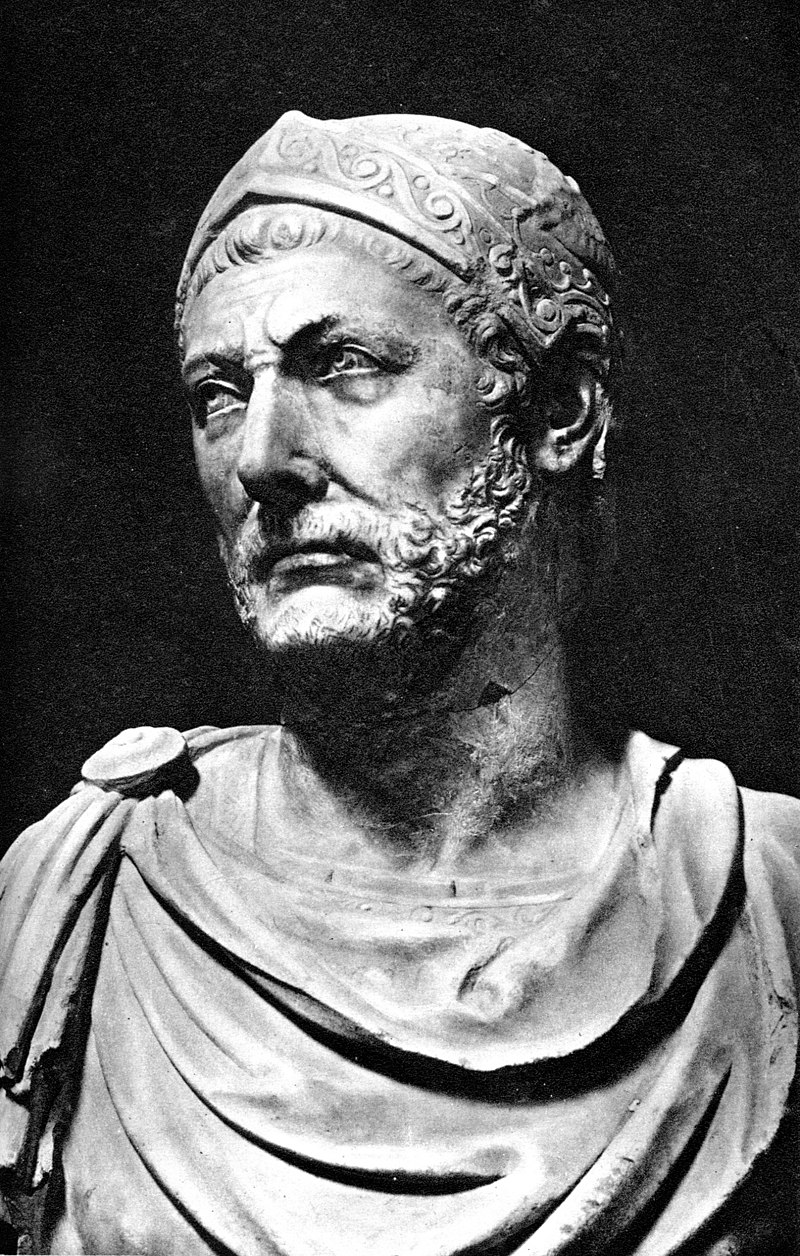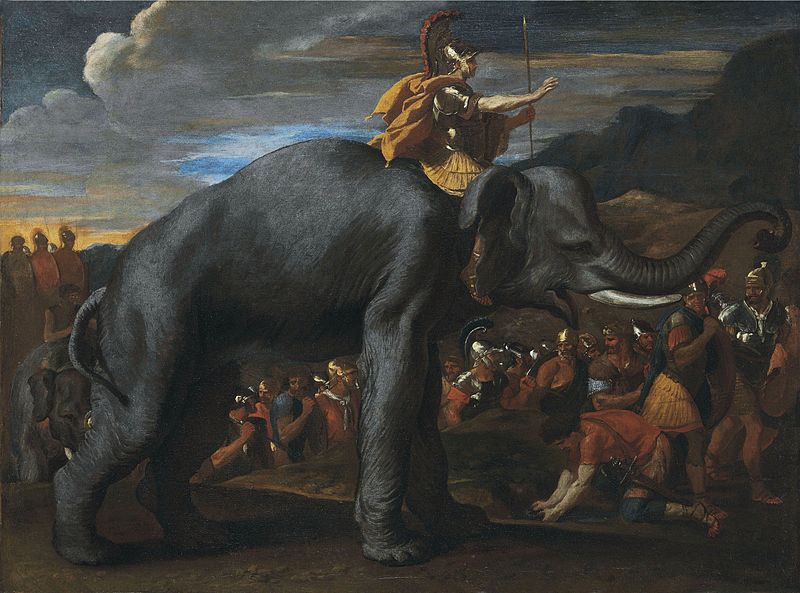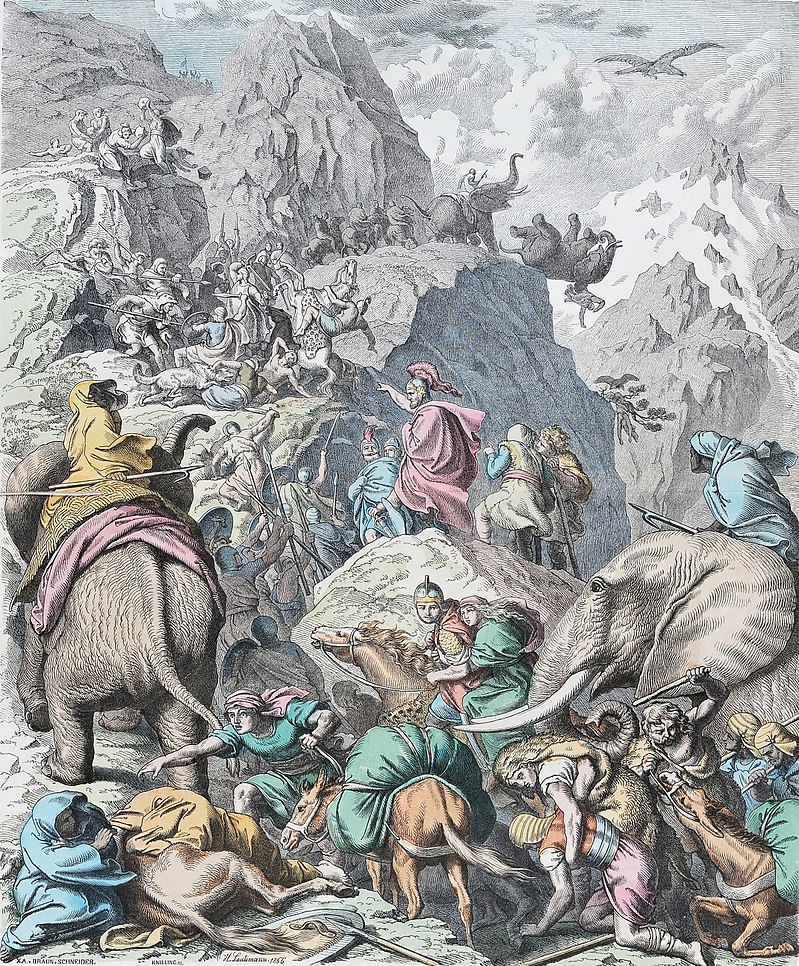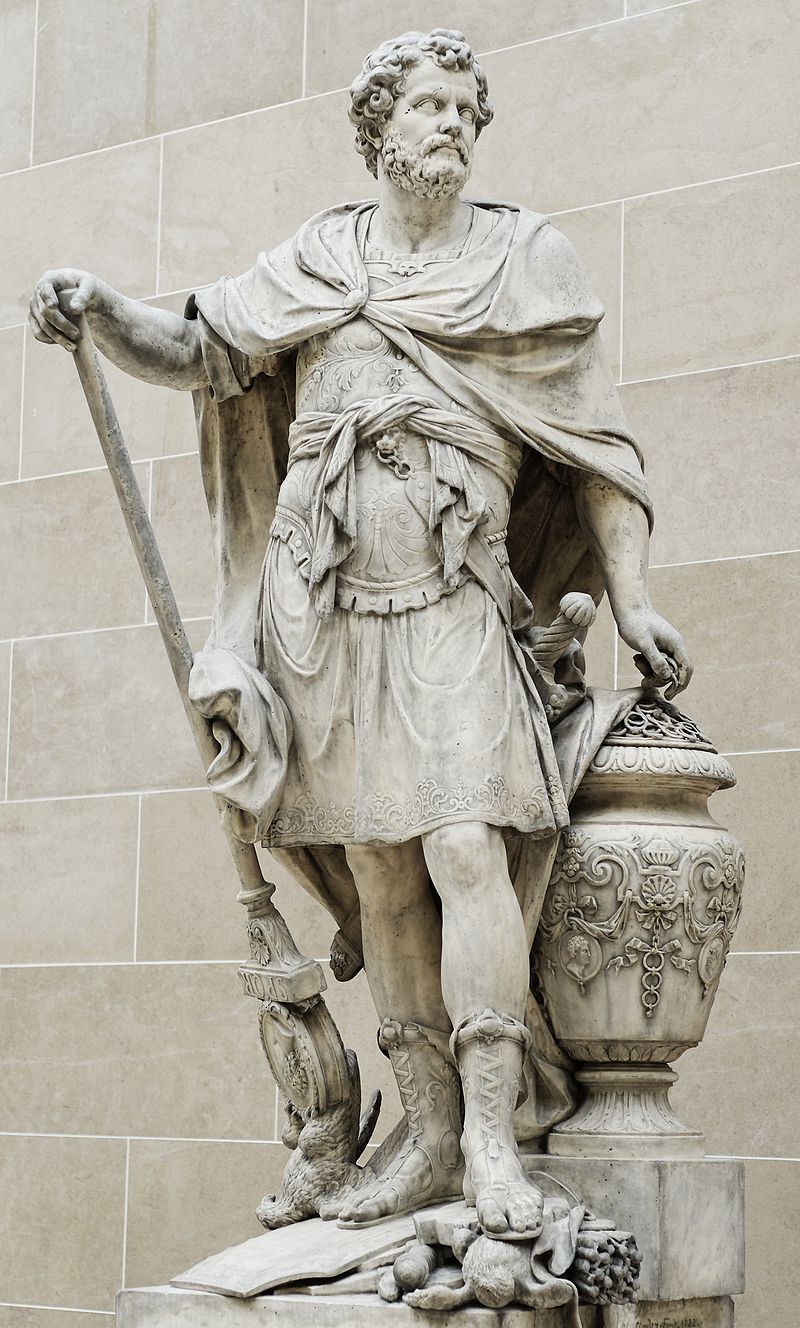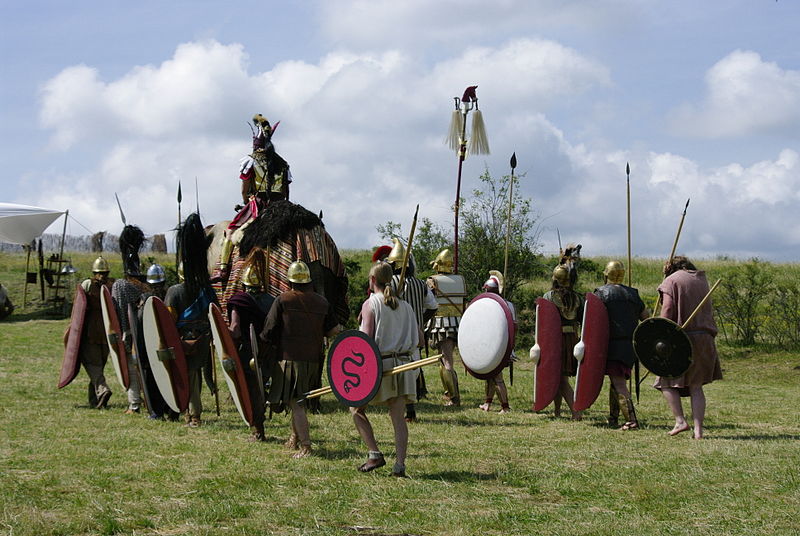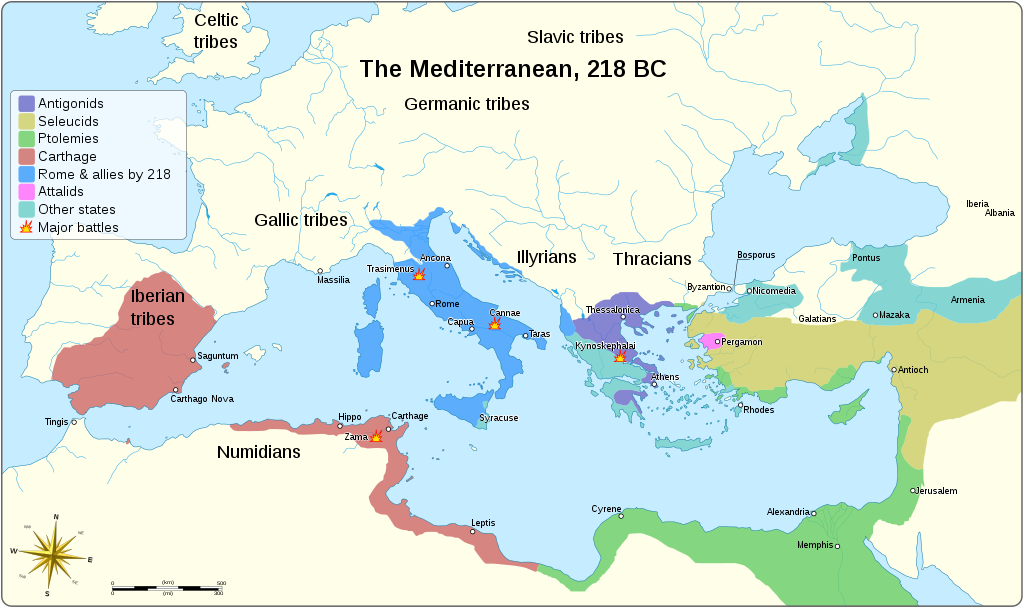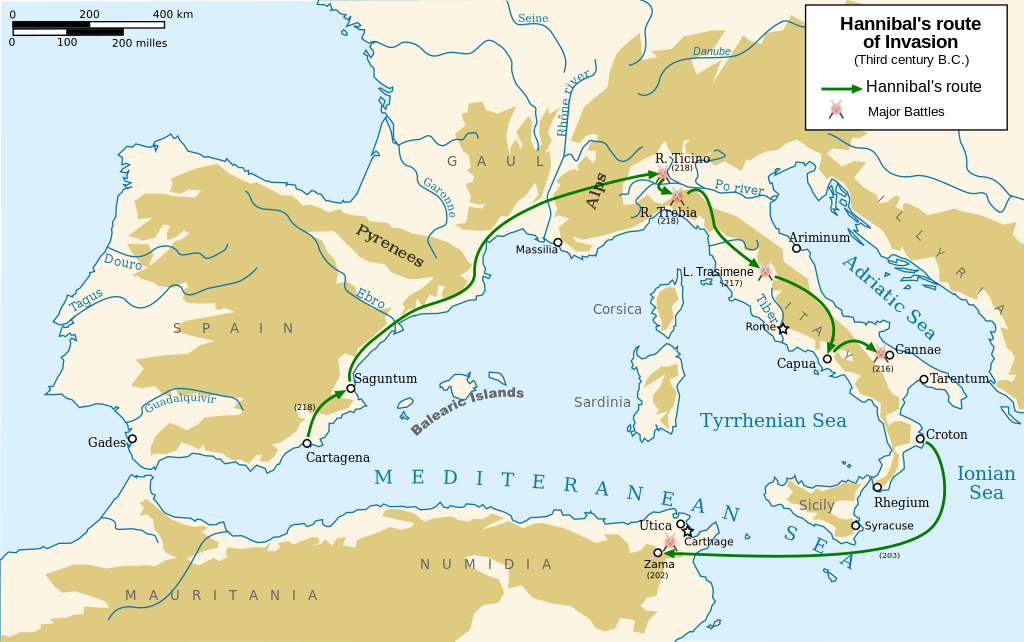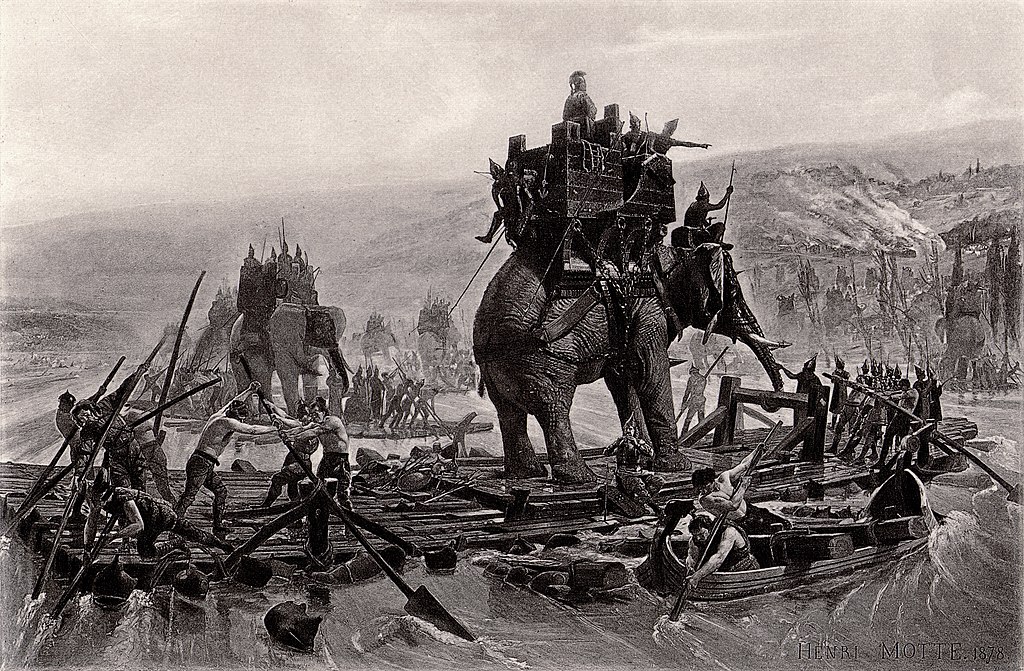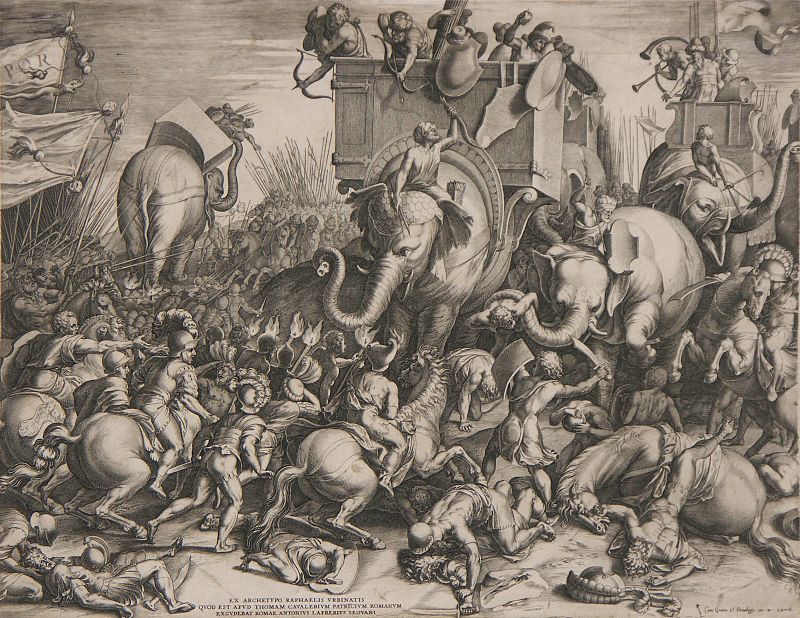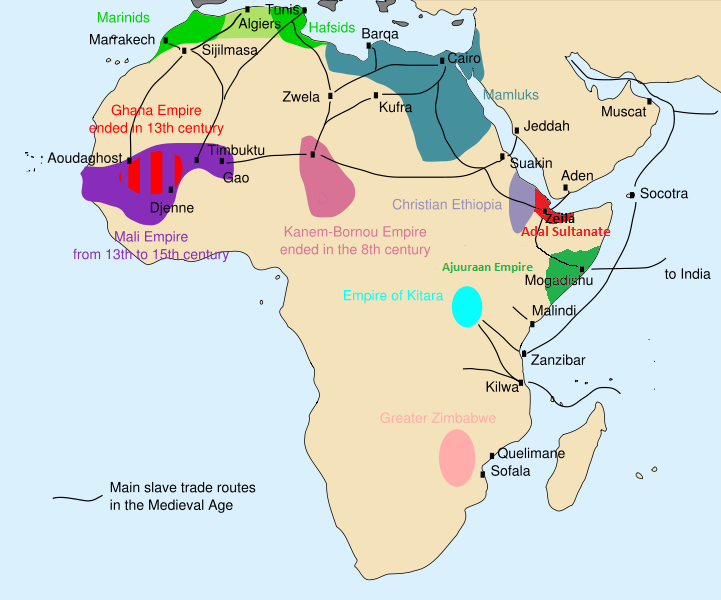Hannibal the General
Hannibal was born in 247 BCE in North Africa. He was a general from Carthage who lead his armies into many battles with Rome.
Because of this, his history has been written by Roman historians like Polybius and Livy, so we know quite a lot about him.
What is Hannibal most known for?
Hannibal is most famous for leading the Carthaginian army and a herd of elephants across southern Europe in the Second Punic War.
There are lots of images of Hannibal riding elephants across Italy.
Where did Hannibal live?
Hannibal lived in Carthage. Carthage was the capital of a people known as the Phoenicians. It is located in modern-day Tunisia.
Carthage and Italy went to war so many times that eventually the city of Carthage was destroyed.
Who was Hannibal?
Hannibal was a general of the Carthaginian army and he lived in the second and third century BCE.
He was born into a military family who had all been fighters. His father was called Hamilcar Barca. The name Hamilcar Barca meant “thunderbolt”!
Hamilcar, Hannibal’s father, also went to war with the Romans. Carthage was defeated by the Roman army and Hamilcar spent the rest of his life trying to improve Carthage’s fortunes.
Hamilcar instilled a hatred for the Romans in his son, Hannibal. Rumour has it that he took his son to Spain to swear that he would forever despise Rome!
Hannibal’s strategic marriage
Hannibal married a woman called Imilce in order to unify and strengthen Carthage. He wanted control over Iberia (southwest Europe) so he married an Iberian princess and conquered many Iberian tribes.
It was quite common at that time for kings and queens to marry people who would help them conquer other lands.
Hannibal really made Rome mad by attacking the town of Saguntum (which is now Saunto in Spain), this started the Second Punic War.
Hannibal Marches on Rome
In Spring 218 BCE, Hannibal marched through a mountain range in southern France called the Pyrenees. He had over 100,000 troops and 40 elephants!
Imagine the locals seeing a herd of elephants pass through.
There were no zoos then and people may not have even seen photographs of elephants. No wonder Hannibal was remembered so often in the history books and art works around the world.
Despite attempts by the Roman general Publius Scipio at the Rhone River to stop Hannibal, he had already crossed and was heading straight for the Alps.
All the way, Hannibal’s army was battled by local indigenous populations. It took him five whole months and he lost 80,000 men, leaving him with just 20,000 infantry in the end.
The Second Punic War
Hannibal’s army battled tirelessly with Roman forces for control of the Italian territory. Over the following three years, Hannibal lost many men and many of his elephants.
He was within three miles of Rome when he finally ran out of men and had to give up the fight.
While Hannibal was in Rome, Romans sent troops over to Carthage, raiding towns and villages. Hannibal’s army was finally defeated in 202 BCE because, in the end, the Romans had superior forces.
When did Hannibal die?
After Carthage was defeated by the Romans, Hannibal spent some time helping with Carthage politics. He was becoming a bit too powerful for Rome’s liking, so they forced Hannibal into exile in 190 BCE.
Hannibal took over the Greek Empire fleet and went to war with Rome’s ally, Pergamon.
His army was once more defeated and he fled to Bithynia. The Romans really wanted to capture Hannibal but he fled instead. He kept his promise and always kept Rome away as his sworn enemy.
He died in around 183 BCE at Libyssa. He took his own life by taking a vial of poison.
Quiz Time!
Who was Hannibal’s father?
What does Hannibal’s father’s name mean?
How many elephants did Hannibal’s army have?
When was Hannibal’s army finally defeated?
Where did Hannibal flee to after the Romans destroyed Carthage?

